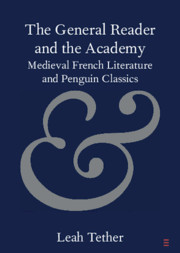Element contents
The General Reader and the Academy
Published online by Cambridge University Press: 11 May 2019
Summary
- Type
- Element
- Information
- Online ISBN: 9781108766715Publisher: Cambridge University PressPrint publication: 30 May 2019
Bibliography
Primary Sources
Secondary Sources
- 8
- Cited by



